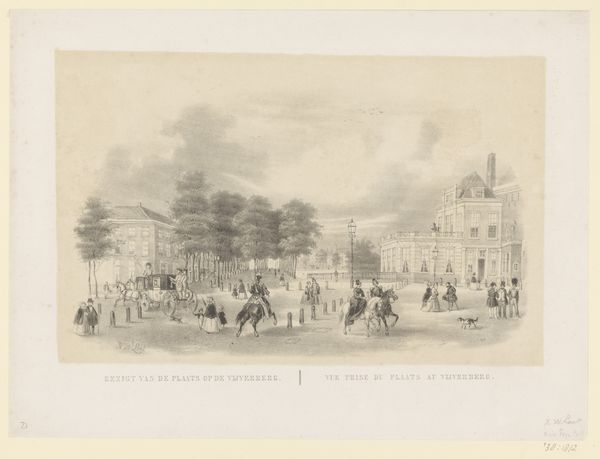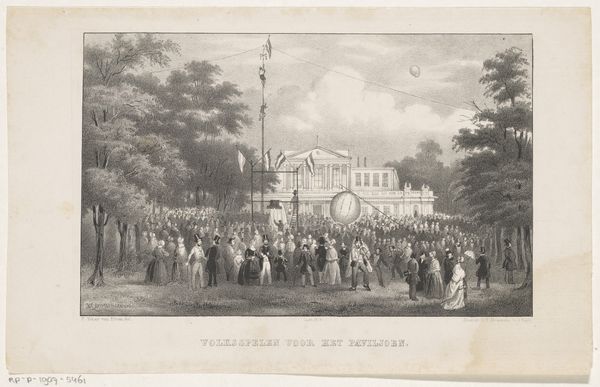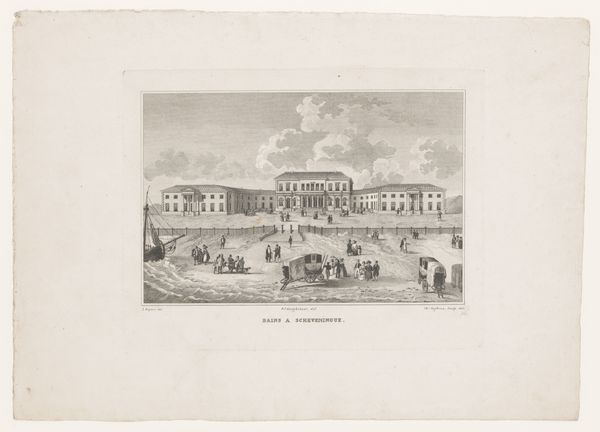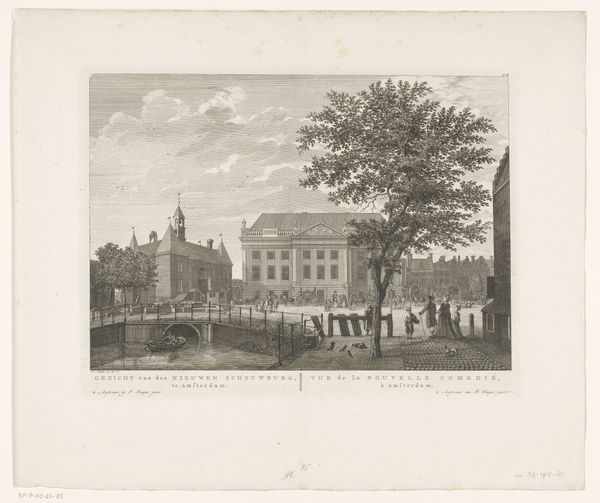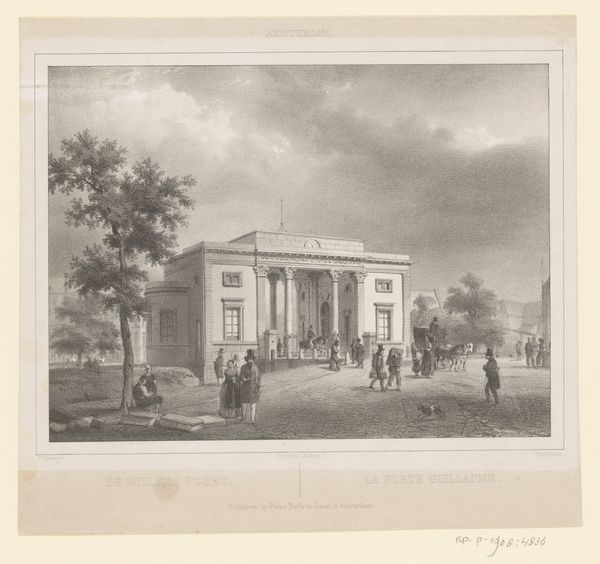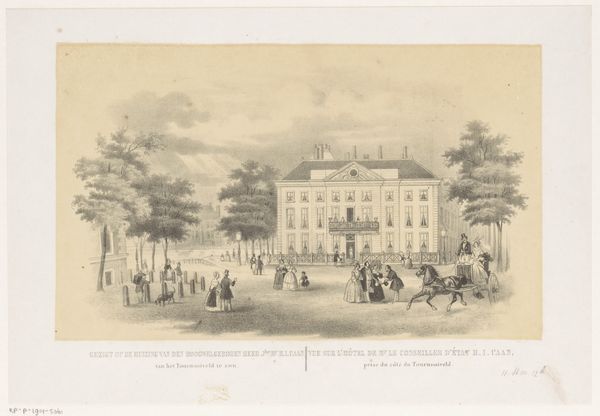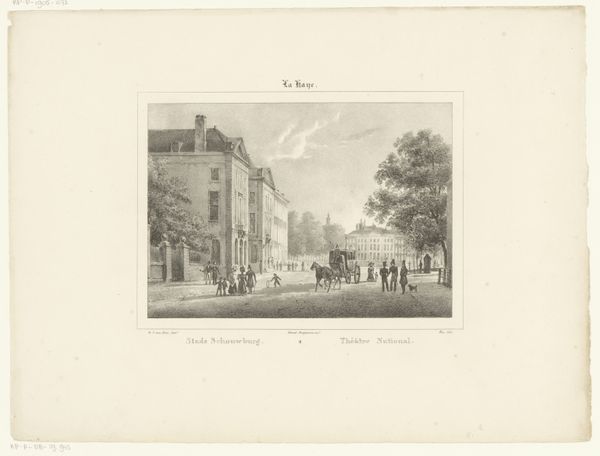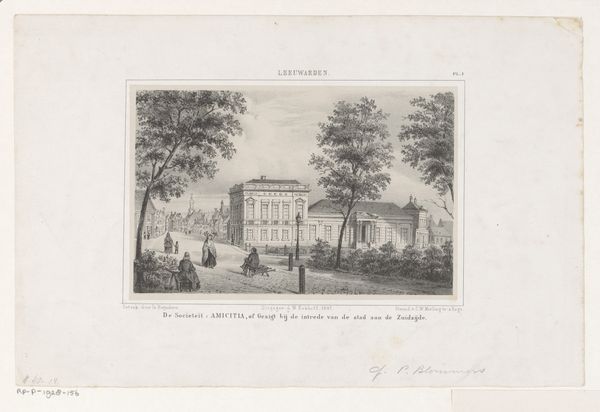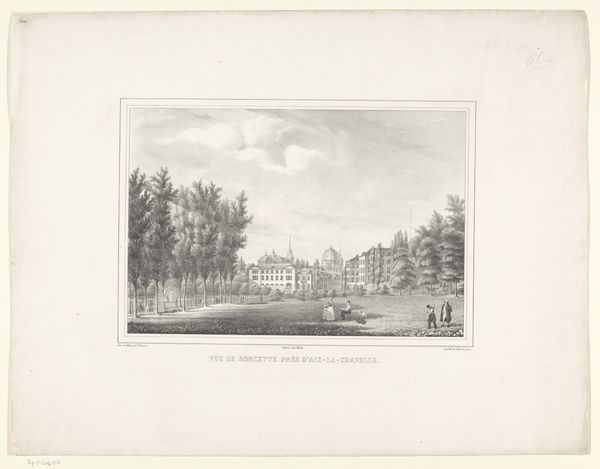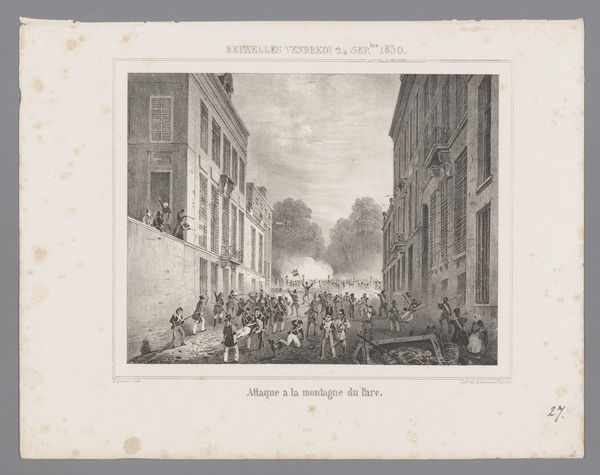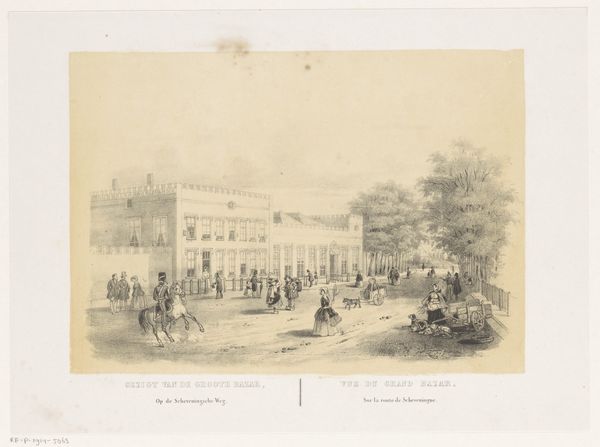
Bezoek van Karel X van Frankrijk aan de Bazar te Reims op zijn kroningsdag 1825
0:00
0:00
print, engraving
# print
#
classicism
#
romanticism
#
cityscape
#
genre-painting
#
history-painting
#
academic-art
#
engraving
#
realism
Dimensions: height 422 mm, width 547 mm
Copyright: Rijks Museum: Open Domain
Curator: Immediately, I’m struck by the feeling of regimented order in this print. The marching soldiers, the evenly spaced architecture… it feels precise, controlled. Editor: It is a rather composed piece. This engraving by Jean Antoine Laurent depicts Charles X's visit to the bazaar in Reims on his coronation day in 1825. An interesting historical record, don’t you think, marking a king's attempt to connect with the everyday life of his people, or at least project such an image. Curator: Absolutely, the *idea* of connection. Visually, all those figures feel like arranged symbols themselves. What stands out for me is that procession: a king as a symbol within a procession acting as a symbol. What does that signal? Does this convey power, order, benevolence? I see repeated symbols, such as the royal insignia which are intentionally placed. How are we meant to read those symbols in context of his visit? Editor: That is astute. Symbols of legitimacy and tradition, no doubt. The location matters too; notice the setting of a bustling bazaar against the backdrop of classical architecture. The artist here captures not only a historical moment but also a constructed vision of royal power coexisting with the vitality of commerce and society. Do the citizens celebrate the King’s symbolic role and embrace the perceived connection to their city’s bazaar? It is not totally clear. Curator: Right, is it truly coexisting? Or is it the Crown attempting to impose a sense of order and control upon the perceived chaos of the bazaar? Look at those masses, those subjects watching their new ruler. Are they celebrating? Are they wary? The engraving holds them at a distance, turning their humanity into repeating motifs. This visit of the King itself becomes part of the broader symbolism, designed to evoke images of continuity and grandeur. Editor: An astute analysis. It is a clever piece of visual rhetoric indeed, framing the King’s visit within carefully chosen visual symbols. By presenting such an image, it helps bolster the perception of continuity and the ongoing strength of France after the tumult of revolution. It's fascinating to think how contemporary audiences would interpret this blending of reality and staged presentation, King and symbolism! Curator: Agreed. Looking closely at Laurent’s print gives us insight into the dance between power, image, and perception. A dance as relevant then as it remains now.
Comments
No comments
Be the first to comment and join the conversation on the ultimate creative platform.
